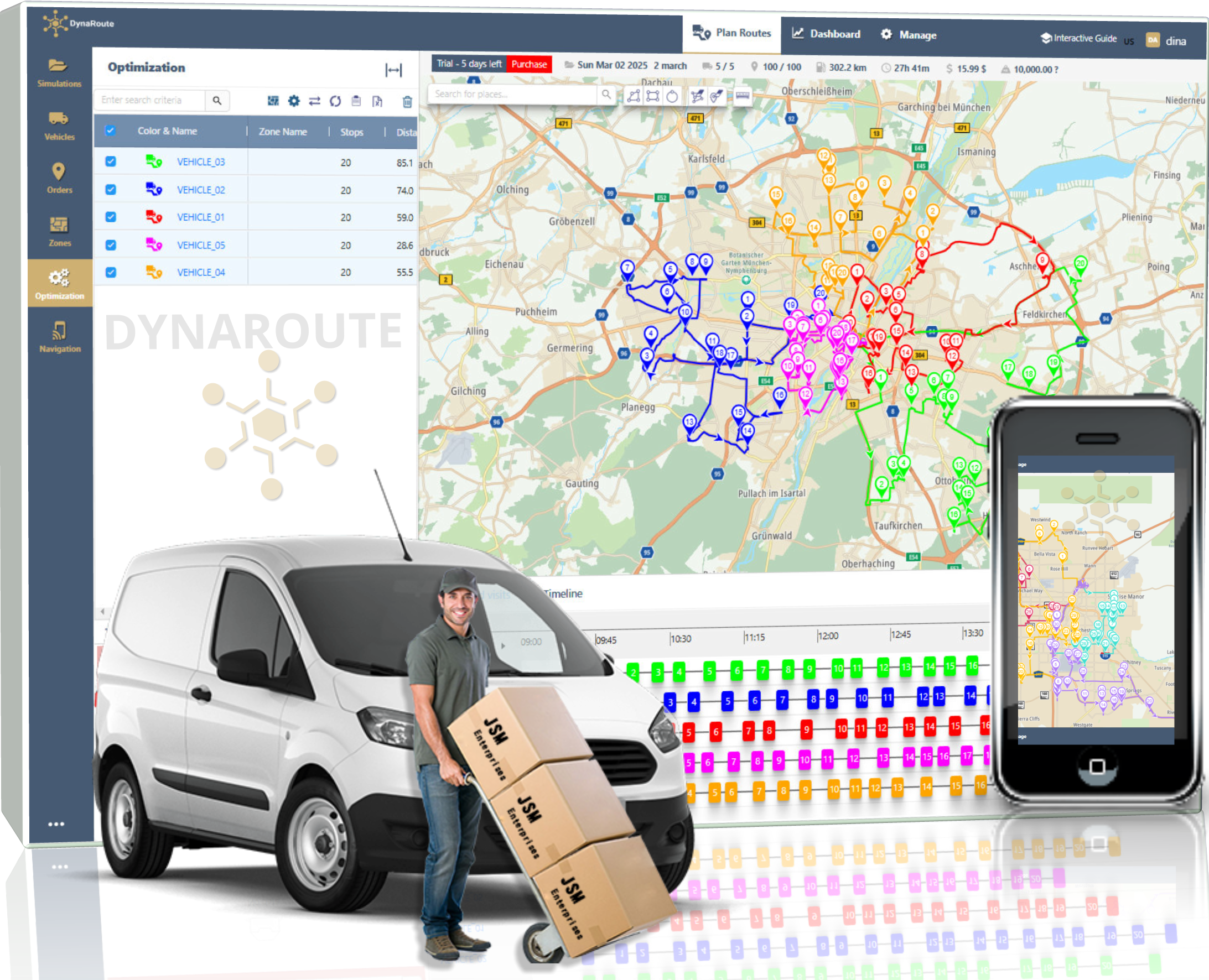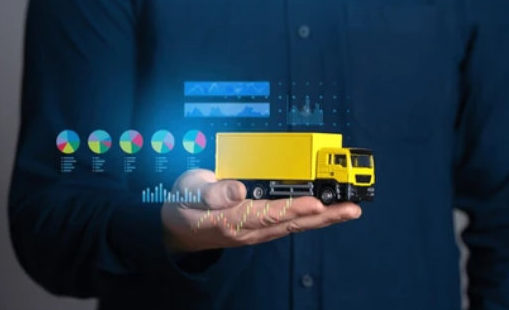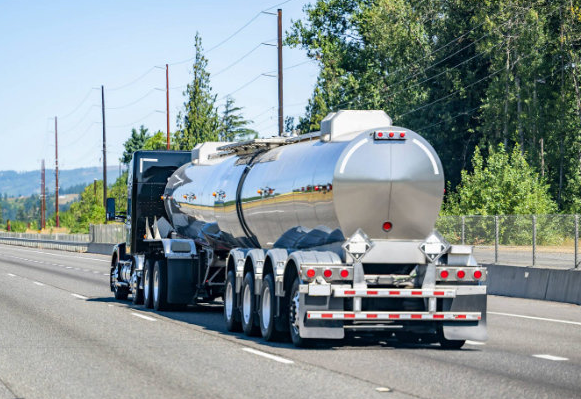Last-mile delivery is the final step in the logistics chain, where goods are transported from a distribution center to the end customer. It is the most complex and costly phase, accounting for 40-50% of total shipping costs. Optimizing this stage is critical for reducing expenses, enhancing customer satisfaction, and minimizing environmental impact.
Key Challenges in Last-Mile Delivery
- Traffic Congestion: Urban delays increase fuel use and delivery times.
- Failed Deliveries: Missed customers lead to repeated attempts and higher costs.
- High Costs: Fuel, labor, and vehicle maintenance drive expenses.
- Customer Expectations: Demand for same-day/next-day delivery strains logistics.
- Environmental Impact: Increased emissions from delivery vehicles.
Strategies for Optimization
- Route Optimization
- Software Tools: Use platform Dynaroute for efficient planning.
- Dynamic Routing: Adjust routes in real-time using traffic/weather data.
- Load Optimization: Maximize vehicle capacity to reduce trip frequency.
- Delivery Density
- Cluster deliveries in high-demand areas (e.g., urban centers).
- Micro-Fulfillment Centers: Position inventory closer to customers.
- Alternative Delivery Methods
- Lockers/Pickup Points: Amazon Hub, FedEx Office.
- Crowdsourcing: Platforms like Instacart leverage local drivers.
- Technology Integration
- GPS & Real-Time Tracking: Enhance visibility for customers and drivers.
- AI & Machine Learning: Predict demand and optimize inventory placement.
- IoT Sensors: Monitor package conditions (e.g., temperature).
- Customer Communication
- Real-Time Updates: SMS/email alerts and in-app notifications.
- Flexible Scheduling: Allow customers to choose/reschedule slots.
- Partnerships & Local Networks
- Collaborate with regional carriers for remote areas.
- Use third-party services (e.g., Uber Eats) for scalability.
- Sustainability Initiatives
- Electric Vehicles (EVs): Companies like DHL use e-bikes in cities.
- Eco-Friendly Packaging: Reduce waste and carbon footprint.
- Data Analytics
- Analyze historical data to identify bottlenecks.
- Predictive Analytics: Forecast demand and optimize resource allocation.
- Driver Performance
- Incentivize efficiency with performance-based rewards.
- Train drivers on route optimization tools.
Case Studies
- Amazon: Uses machine learning for route planning and tests drones via Prime Air.
- UPS ORION System: Saves 10 million gallons of fuel annually by minimizing left turns.
- DHL StreetScooter: Electric vehicles reduce emissions in urban deliveries.
- Instacart: Crowdsourced drivers handle peak-time demand efficiently.
Future Trends
- Autonomous Vehicles: Self-driving vans and drones (e.g., Amazon Prime Air).
- AI-Driven Logistics: Enhanced demand forecasting and real-time adjustments.
- Hyper-Local Fulfillment: Micro-warehouses in strategic urban locations.
- Blockchain: Transparent tracking of shipments and reduced fraud.
- Circular Logistics: Focus on returns management and reusable packaging.
Key Takeaways
- Invest in route optimization software and real-time tracking.
- Prioritize customer communication to reduce failed deliveries.
- Adopt sustainable practices (EVs, bikes) to cut emissions.
- Leverage data analytics for continuous improvement.
- Stay ahead with emerging technologies like AI and autonomous delivery.
Conclusion
Last-mile delivery optimization requires a blend of technology, strategic planning, and customer-centric approaches. By addressing challenges proactively and embracing innovation, businesses can achieve cost savings, improve satisfaction, and contribute to a greener future. Continuous adaptation is key to staying competitive in evolving markets.







